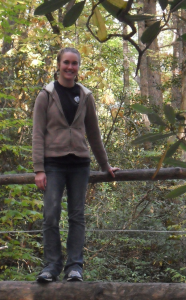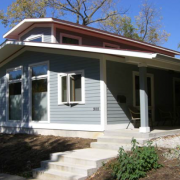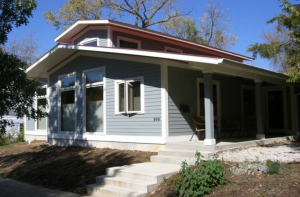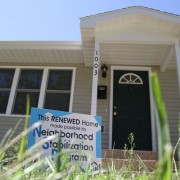
Author: admin


All welcome Stephanie Krajnik
Stephanie is a junior at Aquinas College, studying Sustainable Business and Biology. She plans to earn a degree in public health and use her knowledge of sustainability and biology to prevent chronic health issues through a restructuring business, consumer education, and governmental policy changes.


Due to the enormous number of questions concerning the updates to Energy Star & the Michigan Uniform Energy Code of 2009, The Green Home Institute has developed a training seminar to answer those questions. This session is meant to help builders; designers and trades contractors understand their options and responsibilities in meeting the requirements of Michigan Uniform Energy Code 2009 which took effect March 9, 2011.
You’ll learn compliance options and contractor/tradesmen responsibilities in meeting the requirements of the code minimum, homebuilder tax credits and Energy Star Version 3.0. With change come opportunities. This 4 hour session may be the most important training you can take this year to help you position your business to meet the requirements currently in place or being introduced January 1, 2012.

The presenter for this seminar is Michael Holcomb, President and founding member of the Green Home Institute. He is a founding member of Green Built™ Michigan Inc., The Home Inspector General Inc, and Michigan Green Building Alliance. Mike is a LEED® AP + Homes and NAHB Green Field Verifier. Mike also is a Program Consultant and Trainer with Green Communities™, LEED® for Homes™, Green Built™ Michigan Energy Star®, Live Green, Live Smart Institute, the American Lung Association Health House®, and he trained over 4,500 architects, designers, and builders throughout the Great Lakes States.
WHO SHOULD ATTEND?
Anyone interested in gaining a better understanding of Energy Star V3 the Michigan Uniform Energy Code 2009
o Architects
o Builders
o Developers
o Sub Contractors
o Engineers
o Code Officials
Friday, May 6th 2011
8:00 a.m. – 12:00 p.m.
MTEC Room ATC 120
622 Godfrey
Grand Rapids, MI 49503
COST –
Early Bird Registration $35.00 per person
Register at the door $50.00 per person
Registration Includes – Breakfast snacks & refreshments.
Please pay via PayPal (You do not need to have PayPal to do this)
![]()
Otherwise please send a check to
947 Wealthy St Se
Grand Rapids, MI 49506

INC, formerly Lighthouse Communities, will present its plan for the modern multi-family units, which would be located on nine parcels on four streets near the intersection of Madison Avenue SE and Hall St. SE. The city has already approved development of a tenth parcel on Prospect SE.
All units will be LEED certified, with two to four bedrooms and at least two bathrooms. DeRoo says the project has been well received in the neighborhood, with a petition for the project garnering more than 120 signatures.
More information from Rapid Media Growth

The Gulyas Residence in Bloomington Indiana was one of the first homes in Indiana to receive LEED for Homes Platinum certification! Through the use of passive house techniques and additional sustainable design strategies this project easily met and surpassed the criteria for LEED. View the project profile here. Gulyas Residence, LEED Platinum – Bloomington Indiana



A recent homeowner describes their rational for buidlgin a green home in Minnnesota in a recent article in the Downtown Journal.
She outlines three reasons for her decision:
- Authoritative Source: the LEED rating system helped tremendously to guide us along the path toward building a sustainable home. Its 342-page reference manual provides green building strategies in five key categories: sustainable sites, water efficiency, energy and atmosphere, materials and resources, and indoor environmental quality. The rating system itself is a gold mine for any builder or remodeler to learn more about building high-quality, durable homes.
- Third-party Verification: LEED requires a Green Rater to come to the site, twice: first, to inspect the insulation (pre-dry wall, post-insulation); second, to test the leakage of the entire building envelope, duct system and air flow. These tests were inexpensive relative to the entire cost of the building, and it was more than worth it to have the peace of mind that the house was actually built to specification.
- Triple Bottom Line Benefits: The green rater had predicted the home’s energy consumption to be 35 percent of a similar-sized home built to code, meaning the utility bills would be 65 percent less than if we had not built a LEED home. The homeowner now has almost two year’s worth of utility bills to compare against the planned design. And they are coming in right on target — the bills are actually slightly lower than predicted! In addition, a healthy home for their family and is a large step towards a sustainable lifestyle.
Learn why more people are building LEED homes.

Habitat for Humanity Kent County Chapter has been a leader and pioneer in the field when it comes to affordable and sustainable housing. In 2006, they built the nation’s first affordable LEED certified home under the LEED for Homes pilot project. Due the success of the first home, Habitat for Humanity Kent Co made an innovative commitment in 2007 – that future families would live in homes built to minimum LEED Silver Certification. Currently, they have surpassed the Silver level and have progressed to LEED Gold Certified Homes as their new standard house.

View/Download Complete project profile with LEED score and checklist here.
The Lee House was deconstructed and rebuilt after a fire had burned down the original home (see below). Habitat partnered with GRCC Tassell M-TEC students and instructor Duane McIntyre to build this 5-bedroom two story “Gervais” plan. It is “ZeroStep Certified” to be accessible, and also achieved LEED for Homes Gold Certification. Its 52 Home Energy Rating System score makes this one of Habitat Kent County’s most energy efficient home to date.
To date Habitat for Humanity Kent County has achieved great strides with LEED certification. They have built over 300 homes since they started in Kent County and certified 68 of those homes under the LEED rating system. They have registered 83 as of March 31st 2011 (with more to come!).

LEED Gut Rehabs of existing homes: 19
Average HERS score: 62.1
New Construction LEED Homes: 49
Average HERS score: 61.7
Average Square foot of Conditioned floor area: 1,750
This Habitat affiliate has built to the LEED standard in cities such as Sparta, Grand Rapids, Wyoming, Allendale, Cutlerville, Wayland all in Kent County, Michigan.
The latest home was a total gut-rehab project, made possible by the City of Grand Rapids and HUD via the Neighborhood Stabilization Project (NSP). It has achieved the coveted LEED for Homes Gold certification and will offer the hard-working Lee family a very energy efficient home.
A unique post and beam Generations timber frame porch made from reclaimed power poles will grace the front of this home– easily the most challenging rehab project HFHKC has undertaken.
View/Download Complete project profile with LEED score and checklist here.

Due to Habitat for Humanity of Kent Counties commitment to LEED certification, they have been able to attract many more sponsors, donors and volunteers. They have also been able to achieve some great accomplishments.
Deconstruction of homes literally saves tons of usable materials and items from heading to the landfill. These materials are re-sold at the Habitat ReStore for a profit to build other homes.
Thirty young construction students were educated in current green building practices and upon graduation, will bring those skills onto the local construction scene.
abitat discovered that it costs approximately $8000 more to incorporate green building and zero-step entry into a Habitat home building per house, and that the long-term benefits to the family and the environment easily justify the expense.

It is estimated (based on their earliest LEED Homes) that annual savings costs for electric, water, and heating will be at least $1,000 per home per year. The extra money available every month eases the hard decision “food or heat?” for families who live close to the poverty line.
Over the life of each homebuyer’s 25 year mortgage, the savings equates to $25,000 at minimum – money a family is able to invest into strengthening their future.
The future looks bright for Habitat for Humanity and Green Building. They now have LEED Platinum and Zero Energy / Net Zero homes under-construction. They are partnering with over a dozen organizations to continue revitalization efforts in the Wealthy Heights Neighborhood of Grand Rapids. They may be looking towards LEED ND certification for their neighborhood redevelopment plans.


More than 10,000 homes across the U.S. have earned LEED certification through the LEED for Homes program, according to the U.S. Green Building Council (USGBC). LEED-certified home projects span the residential market, from multi- and single-family, to market rate and affordable housing.
“Reaching this milestone signifies the continued transformation of the home building industry towards high-performing, healthy homes that save home owners money,” said Nate Kredich, Vice President of Residential Market Development, U.S. Green Building Council. “Market leaders across the production, multifamily, affordable and custom home segments have recognized that there are green homes, and then there are LEED Homes, and they are acting accordingly.”
LEED for Homes is a national voluntary certification system that promotes the design and construction of high-performance green homes that use less energy and water and fewer natural resources; create less waste; and are healthier and more comfortable for the occupants. Since its launch in 2008, 10,161 homes have certified with over 38,000 additional units in the pipeline.
The 10,000th home to earn LEED certification was Tacoma Housing Authority’s 91-unit development, Salishan 7 in Washington. Salishan 7, built by Walsh Construction Company, is the first federally funded HOPE VI Redevelopment project to achieve LEED Platinum. The project was built within an affordable budget, and was designed to be at least 30% more energy efficient than the average home, effectively removing 27 homes from Tacoma Power’s electrical grid.
“We are proud to be a part of the community of over 10,000 homes that have committed to excellence through the LEED for Homes program,” said Michael Mirra, Executive Director, Tacoma Housing Authority. “Our LEED Platinum housing projects are less expensive to operate and are healthier inside, which means a world of difference to our residents.”
Nationally recognized market leaders such as McGuyer Homebuilders, Inc (production homes) in Dallas, Tex., Fore Property (multifamily) and dozens of Habitat for Humanity affiliates (affordable) are just a few of the organizations committing to LEED certification across the country.
Supporting the growth of the LEED for Homes program is the robust and dedicated network of LEED for Homes Providers; a community of nearly 400 LEED AP Homes credential holders, helping meet the need for knowledgeable green home building professionals; and a growing number of LEED for Homes Green Raters. Additionally, the USGBC recently launched its LEED for Homes Scoring Tool for builders to self-evaluate their home construction projects to see how close they are to LEED certification. This simple web-based application makes the program even more accessible to builders and homeowners.
Work with to help make your next LEED project a success.

LEED Green Associate, LEED AP O&M and LEED AP Homes, among other GBCI-administered credentials achieve recognition from the American National Standards Institute.
“This accreditation from ANSI validates the integrity of our processes under a global standard. That provides a mark of differentiation for our credential holders, and the respect of the market that employs them” said Beth Holst, Vice President for Credentialing at GBCI.
Read the full article here.
What this will do in the marketplace is assure employers that their AP staff are uniquely qualified and trained individuals who are setting the bar for green building by meeting the rigorous demands set by this organization. This will add demand for these credentials amongst employers and add value to those employees looking for a competitive edge in a growing green market.
Especially in a residential green market with an alphabet soup of credentials available under every rating system, having ANSI recognize LEED AP Homes as the “most qualified, educated and influential green building professionals in the marketplace” will not only increase the demand for these LEED AP individuals, but will subsequently increase the demand for their LEED certified homes.
To find other green professionals in your area visit the Green Home Guide, or to learn more about how to become a LEED AP Homes visit our Tools page.


Lt. Governor Becky Skillman at Habitat for Humanity LEED Platinum Open House
It’s Official! Habitat for Humanity of Greater Indianapolis achieved it’s first LEED PLATINUM rating on an affordable home. How great is that?!
Residential Green Builders, USGBC’s local LEED For Homes advocacy group in Indianapolis, is currently working with Habitat again for another LEED home to start construction in July. If you are interested in getting some project experience in LEED for Homes please contact Christin Kappel or William Wagnon– the planning phase is going on now, so the sooner you join in the more you’ll learn.
Thank you to Habitat for Humanity for allowing us to be involved in this milestone and for all of their hard work and dedication to this project. Congratulations to you all!
For more information about this and other projects check out the USGBC Indiana’s 2010 Annual Report.
We look forward to working with Habitat for more affordable green homes in the future!